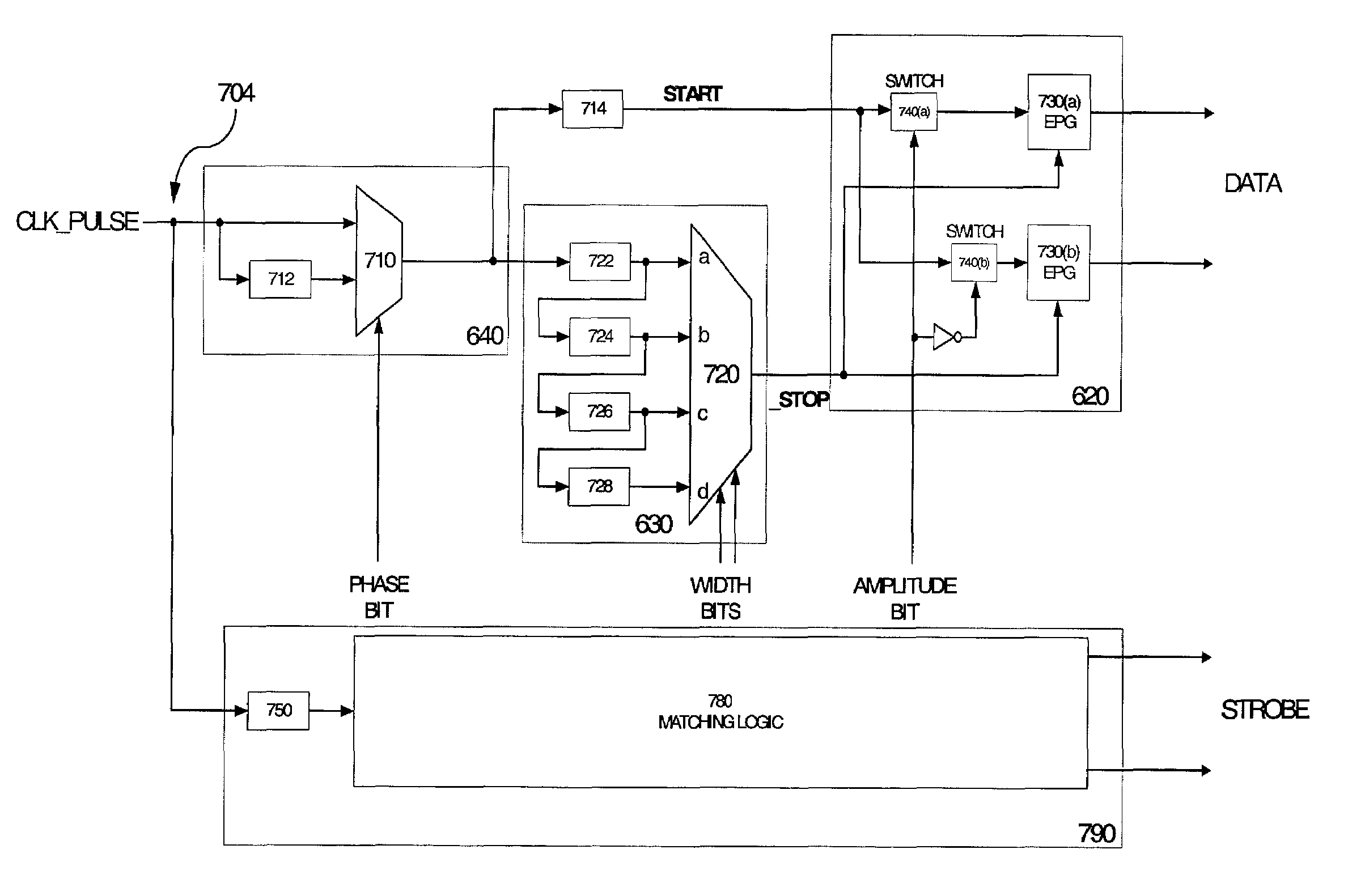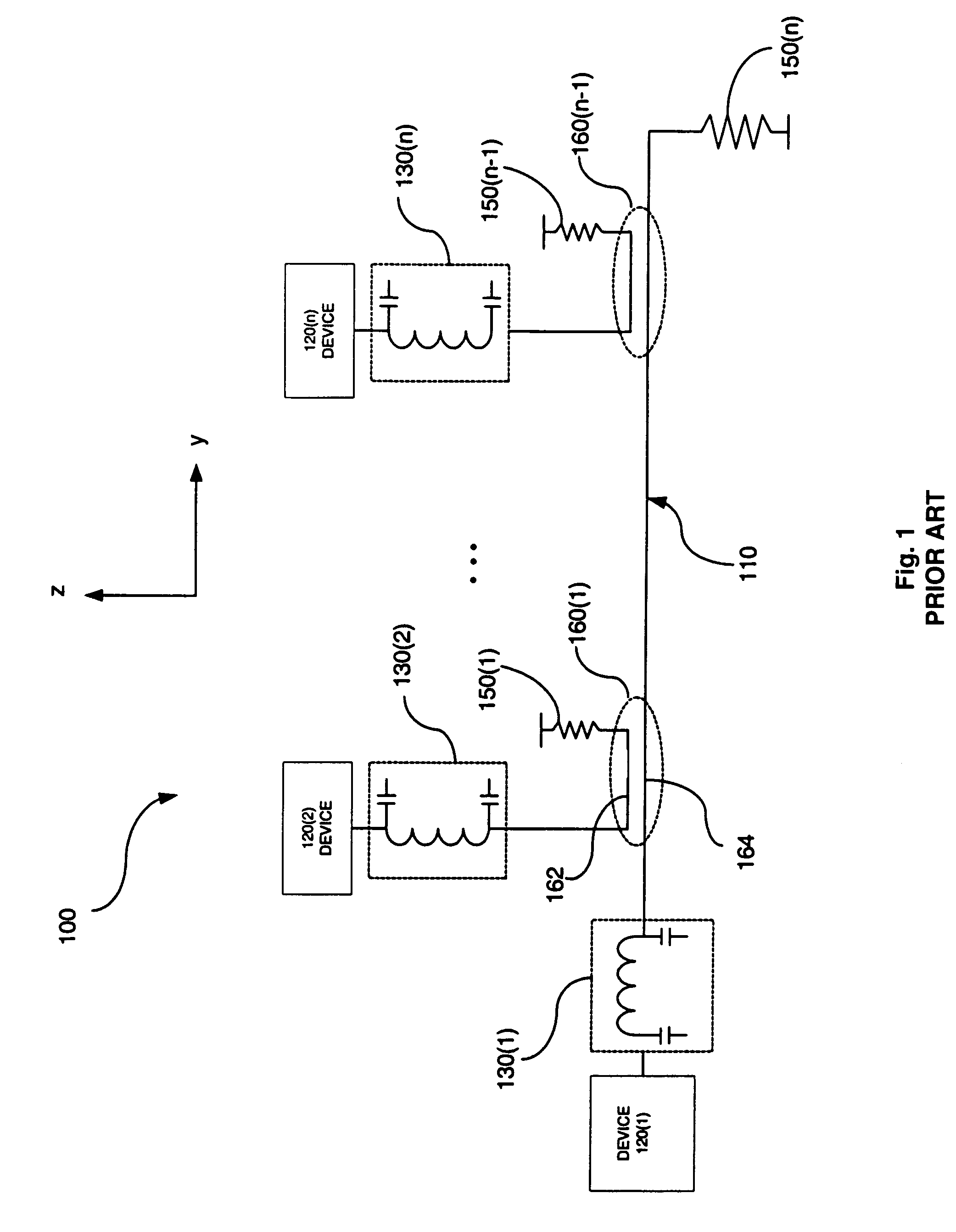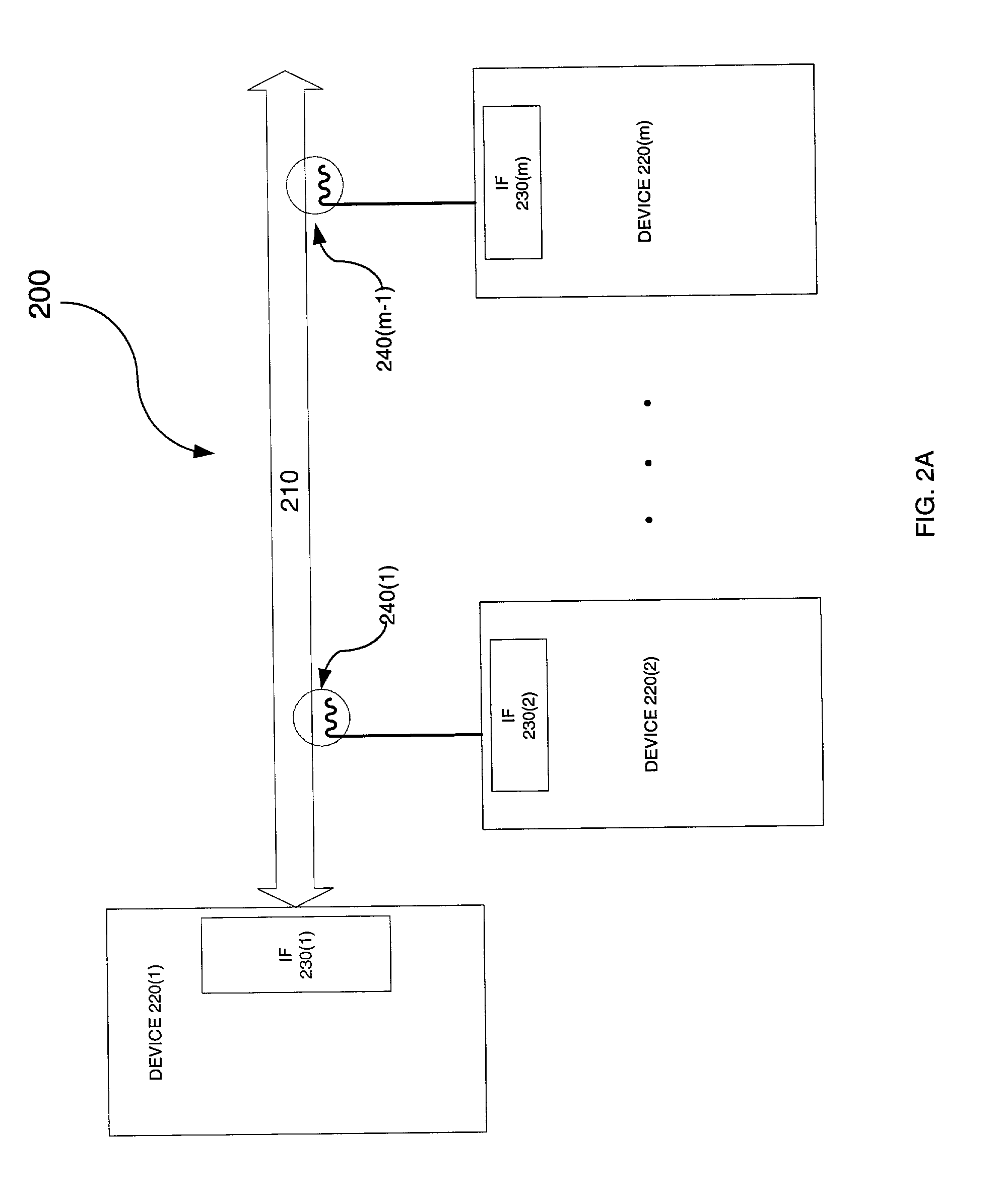Symbol-based signaling device for an electromagnetically-coupled bus system
a bus system and signaling device technology, applied in the field of symbolic signaling devices for electromagnetically coupled bus systems, can solve the problems of affecting the performance of the processor, and outperforming the data delivery bandwidth of the conventional system by significant margins,
- Summary
- Abstract
- Description
- Claims
- Application Information
AI Technical Summary
Problems solved by technology
Method used
Image
Examples
embodiment 500
[0074]FIG. 5A is a block diagram of an embodiment 500 of interface 230 suitable for processing multi-bit symbols for devices 220(2)–220(m). For example, interface 500 may be used to encode outbound bits from, e.g., device 220(2) into a corresponding symbol for transmission on bus 210, and to decode a symbol received on bus 210 into inbound bits for use by device 220(2).
[0075]The disclosed embodiment of interface 230 includes a transceiver 510 and a calibration circuit 520. Also shown in FIG. 5A is device side component 242 of electromagnetic coupler 240 to provide a transferred waveform to transceiver 510. For example, the transferred waveform may be the differentiated waveform generated by transmitting pulse 420 across electromagnetic coupler 240. A device side component 242 is provided for each channel, e.g. bus trace, on which interface 230 communicates. A second device side component 242′ is indicated for the case in which differential signaling is employed.
[0076]Transceiver 510...
embodiment 600
[0079]FIG. 6 is a block level diagram representing an embodiment 600 of transceiver 510 that is suitable for handling waveforms in which data bits are encoded using phase, pulse-width and amplitude modulation, and the strobe is provided by a clock signal. Transceiver 600 supports differential signaling, as indicated by data pads 602, 604, and it receives calibration control signals from, e.g., calibration circuit 520, via control signals 608.
[0080]For the disclosed embodiment of transceiver 510, transmitter 540 includes a phase modulator 640, a pulse-width modulator 630, an amplitude modulator 620 and an output buffer 610. Output buffer 610 provides inverted and non-inverted outputs to pads 602 and 604, respectively, to support differential signaling. A clock signal is provided to phase modulator 640 to synchronize transceiver 510 with a system clock. The disclosed configuration of modulators 620, 630, and 640 is provided only for purposes of illustration. The corresponding modulati...
PUM
 Login to View More
Login to View More Abstract
Description
Claims
Application Information
 Login to View More
Login to View More - R&D
- Intellectual Property
- Life Sciences
- Materials
- Tech Scout
- Unparalleled Data Quality
- Higher Quality Content
- 60% Fewer Hallucinations
Browse by: Latest US Patents, China's latest patents, Technical Efficacy Thesaurus, Application Domain, Technology Topic, Popular Technical Reports.
© 2025 PatSnap. All rights reserved.Legal|Privacy policy|Modern Slavery Act Transparency Statement|Sitemap|About US| Contact US: help@patsnap.com



